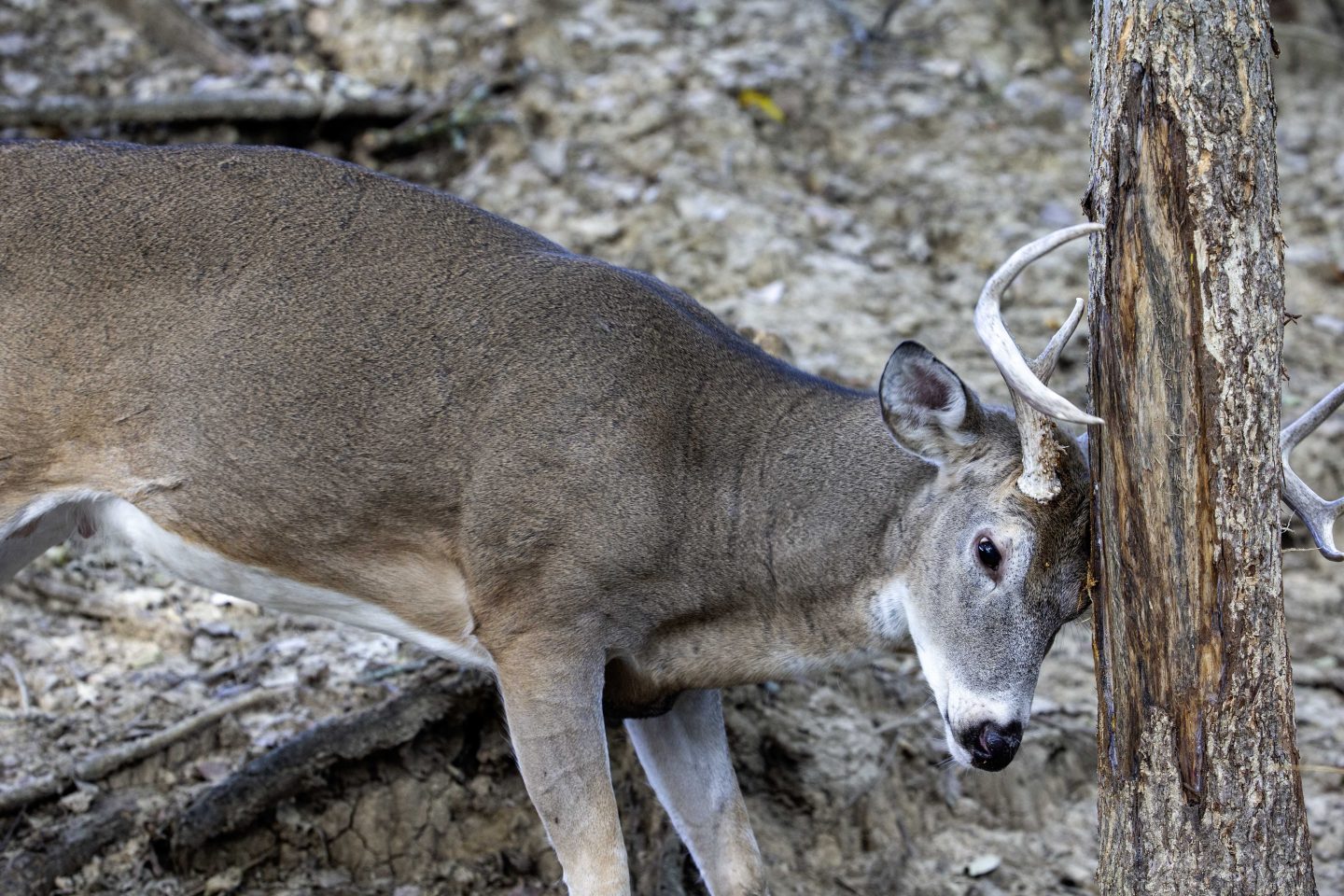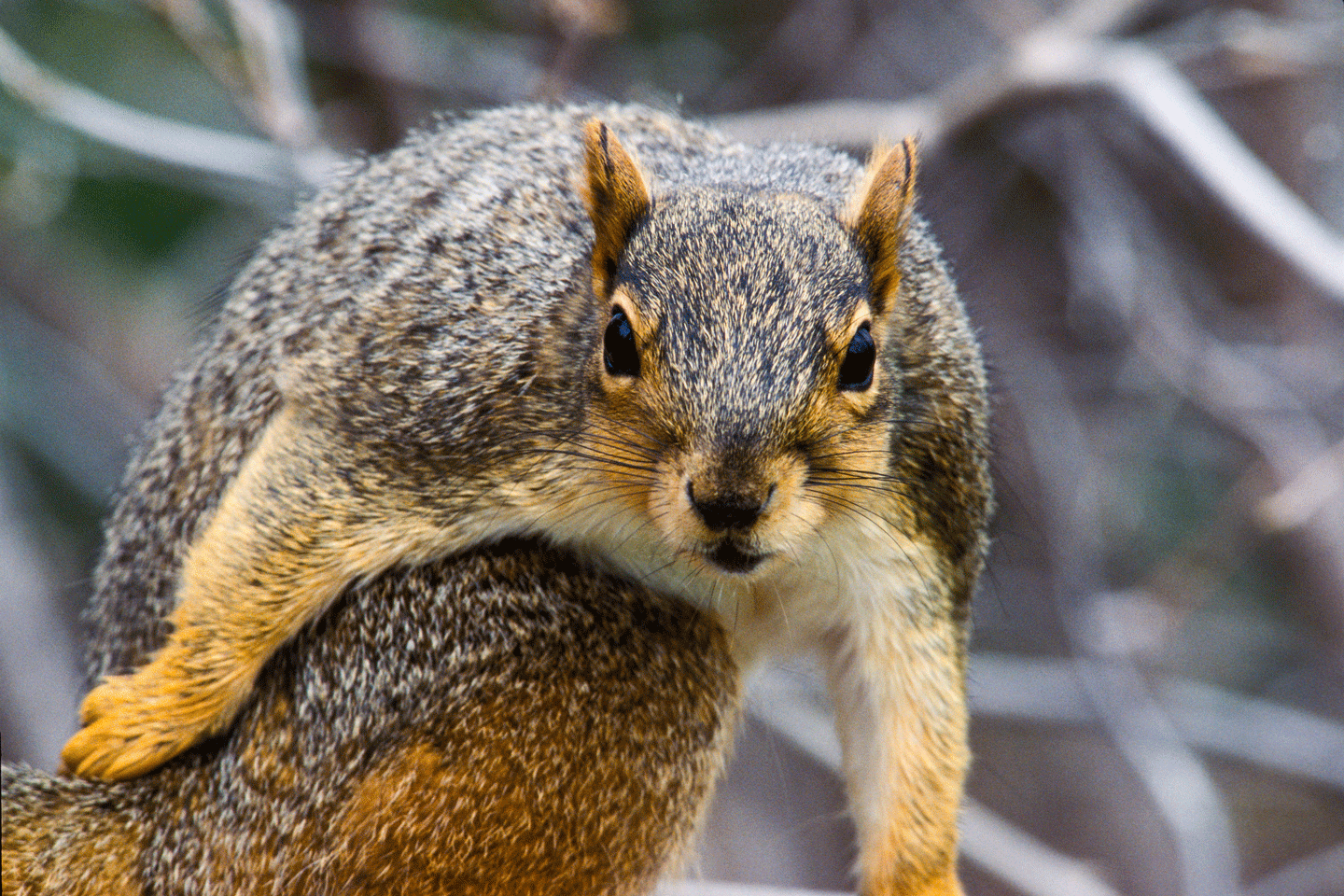
By Greg Wagner
Active, careful listening to and deciphering of nature’s sounds should be applied to any animal or bird when we are deer hunting. These wild creatures live around white-tailed deer and have something to tell us, if we are willing to quietly, intently listen.
As a deer hunter, you need to be an intense listener of sounds that point out the movement of larger mammals. The area around your deer stand or blind gets noisy when you arrive because the animals have heard you coming and sounded alarm calls. After you sit still and quietly for about 10 to 15 minutes, the area will come alive with the more comfortable, normal sounds of small animals and birds going about their daily routines.
Listen to the rhythm and volume of wildlife calls and take notice of any changes, however abrupt, rapid and expressive.
Squirrels
Fox squirrels offer first-rate natural alarm systems and warn of intruders entering their area. When deer hunting, if you spot a squirrel frolicking and feeding normally on the ground, but it instantly stops and hightails it for the closest tree while barking and chattering, something is up. Bark and chatter calls emitted by fox squirrels serve as an anxious awareness of danger to warn others of intruders or predators in their respective areas.
If a squirrel hears a deer coming through an area, it most likely will sound a warning and hit the nearest tree. On the other hand, one of the best signs that deer are close by is that squirrel activity and vocalizations will quickly cease, and the squirrels will vanish with no warning or sound.

Birds
Know your birds and the sounds they make. They are tattletales. Blue jays, cardinals, chickadees, nuthatches, sparrows, killdeer, Carolina wrens, crows, turkeys, ducks and other birds have vocal language that are great indicators of deer movement. Birds get particularly excited around white-tailed deer and utter this anxiety often. They have distinct calls when they are disturbed or being pushed through timber or along the edge of cover.
When hunting woodlands, for example, the blue jays are among the most easily identified and vocal of all birds. They are consistent at letting the hunter know when white-tailed deer are on the move. Their calling will become much sharper with a lot more emotion. In addition, when you see and hear a flock of birds arise and fly, take notice of the direction in which they came. Be watchful and listen very closely for the approach of an animal from that direction. It may take a while, and it could be a fur-bearing animal such as a coyote, bobcat or raccoon, but deer will spook them as well.
Turkeys and Crows
Similarly, wild turkeys and crows will vocalize when disturbed, and deer hunters who pay close attention can pick up on these signals. A wild turkey’s warning call is known as a “putt,” which consists of one or several sharp, single, high-pitched notes. This “putt” sound serves as an alarm, signaling to other turkeys that a potential threat or danger has been detected in the area.
A crow’s warning call is a loud, often repeated, and sometimes erratic “caw” or series of “caws” used to alert other crows to a perceived danger or threat. These calls can vary in pitch and intensity depending on the closeness and nature of the threat. Their sounds will sometimes changing into a different vocalization if the crows decide to hide rather than confront the danger.
Deer
Some researchers believe that white-tailed deer can make up to 400 different vocalizations. Most of them are made so softly and subtly that only skilled listeners can recognize them. Hunters should be familiar with certain groups of calls that they can potentially hear. These include alarm calls (snort) and bawl calls (when deer are traumatized or stressed). Generally, deer flee when they hear both these sounds. Mother-fawn calls include a maternal grunt, bleat, mew, nursing grunt or whine. A contact call is used when the deer become separated. This is a moderately pitched grunt and can be used by hunters to draw deer to them.
Hunters should note the three aggressive calls bucks make during the rut (breeding season) — low grunt, grunt-snort and grunt-snort-wheeze. In addition, there are mating-related calls such as the tending grunt, trailing grunt, flehmen sniff and bellow. Of these, the tending grunt — of moderate volume and often longer duration than a contact grunt — can be used by hunters to actually bring in bucks during the rut.
To hear white-tailed deer bucks fighting with their antlers and possibly mimic it with rattling antlers or rattle bags, listen for a loud crash followed by intense grinding, cracking, and rustling sounds. Bucks are most likely to fight during the rut.
Also during the rut, listen closely for mature bucks making rubs on trees and scrapes on the ground. Deer rubs and scrapes are primarily forms of communication. Both act as signposts for other deer during the time of the rut.
Hearing other movement by deer is critical, too. Leaves rustling, twigs snapping, brush breaking, wire fence twanging, dry corn stalks crackling and water splashing are all sounds that may indicate deer traveling nearby.
The bottom line is this: The countryside and the woods are talking to us as deer hunters, all we have to do is give the setting our full attention and listen. It is not only a big part of the enjoyment of the hunt, but also can be crucial to success.
